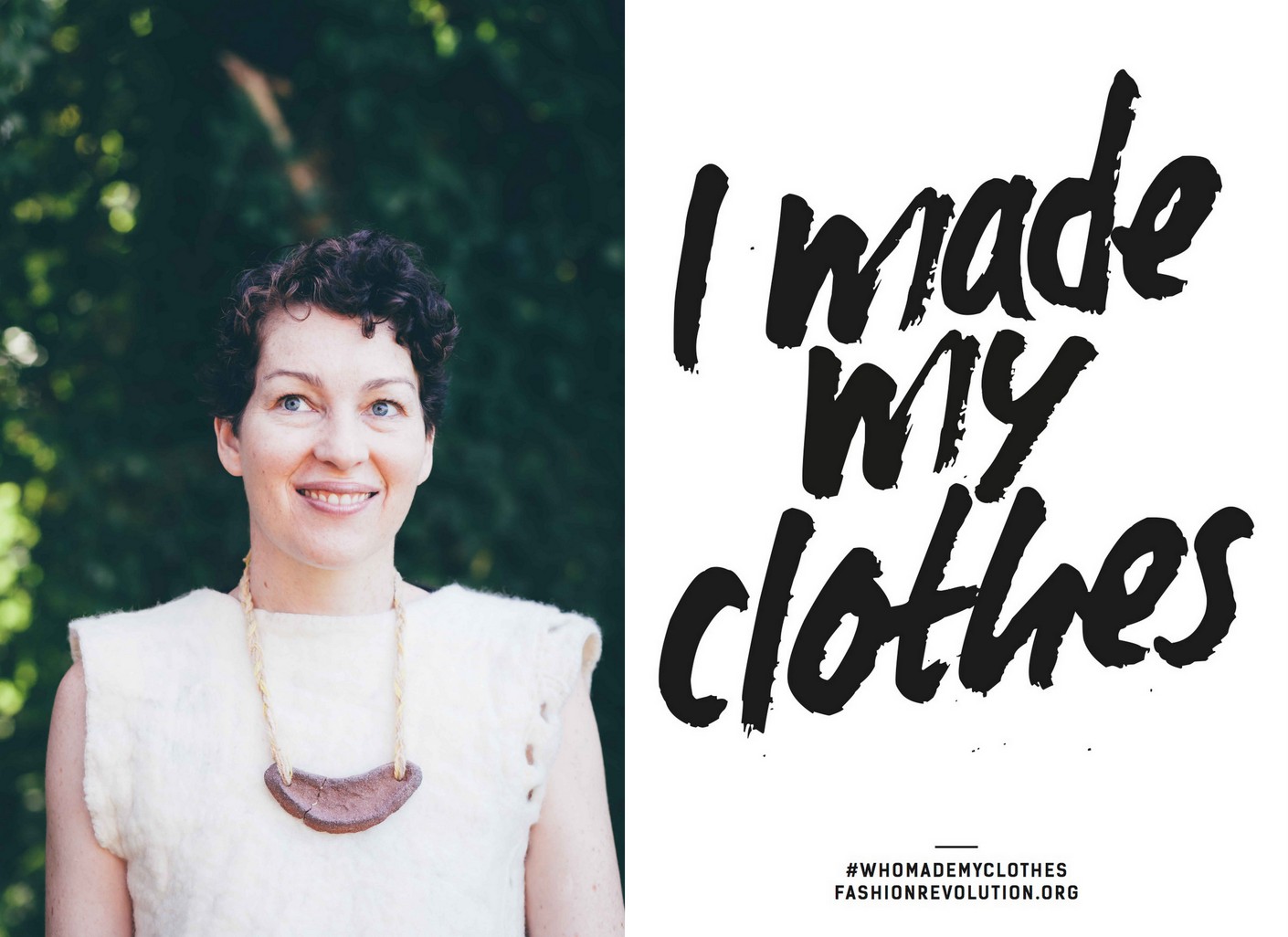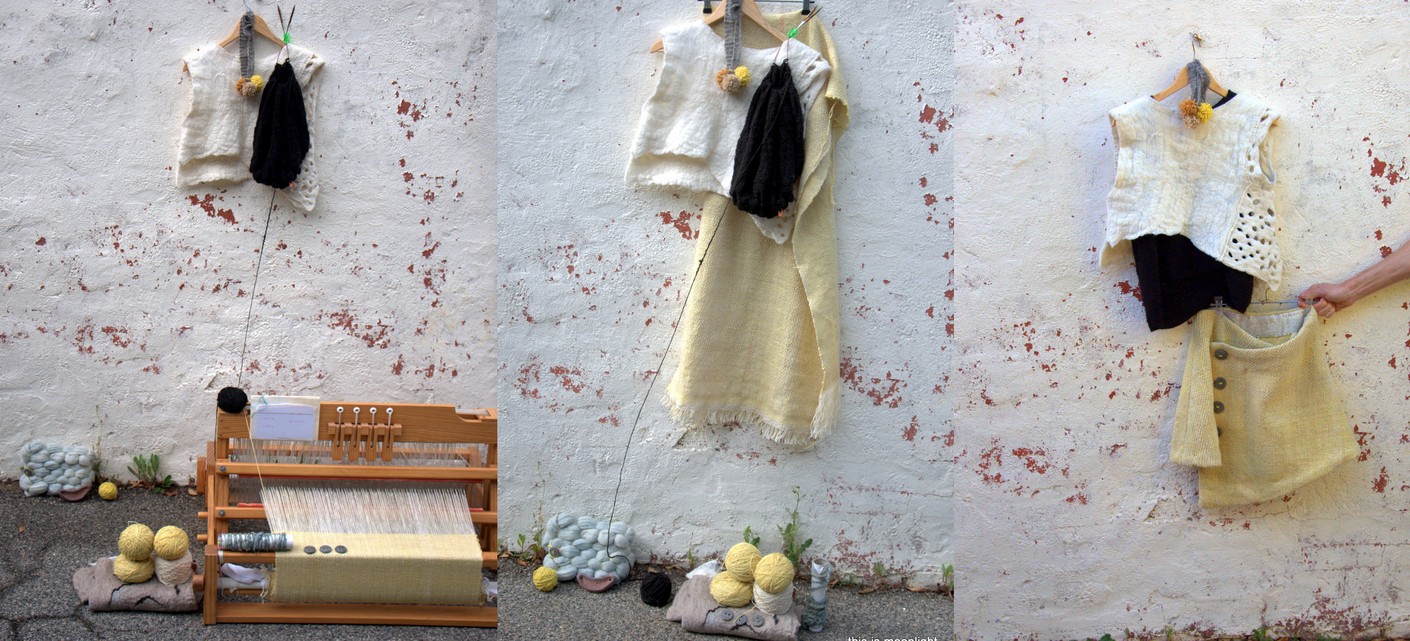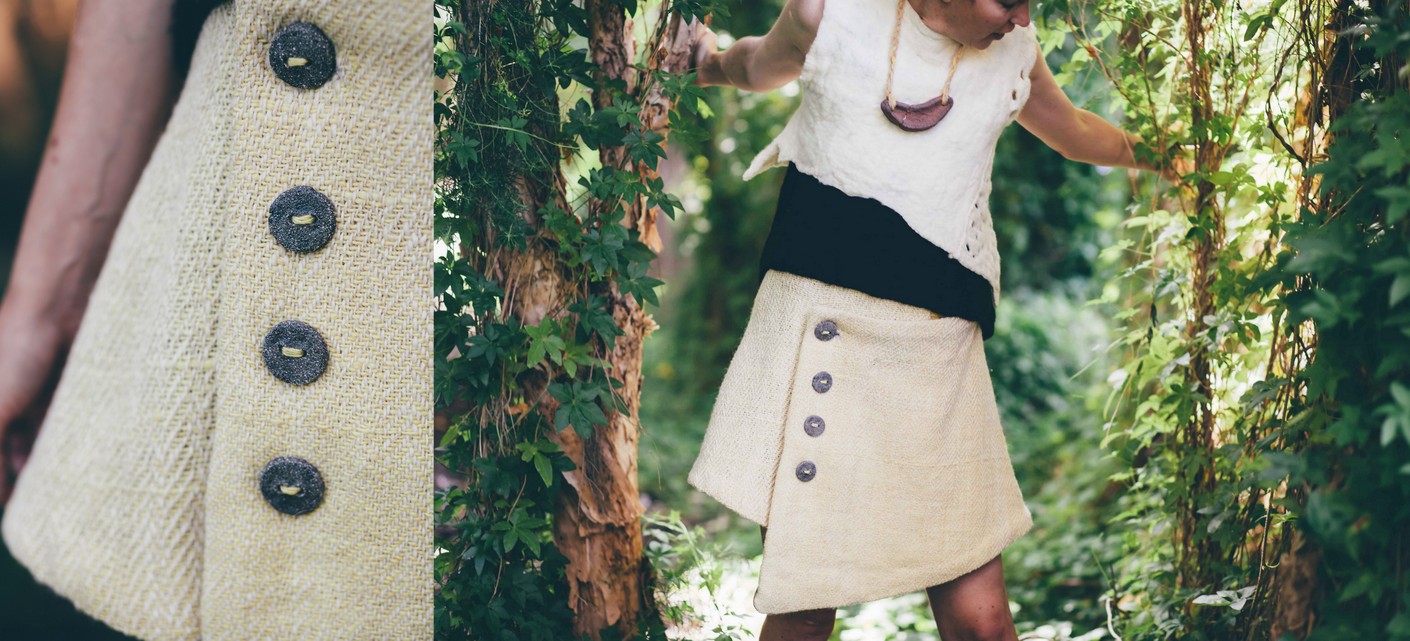By Nicki Taylor
Nicki Taylor launched the One Year One Outfit Fibershed Affiliate, a project to investigate supply chains and spend the course of a year sourcing one local outfit. Based in Australia, Taylor invited people from around the world to participate in the challenge, cultivating a diverse range of local clothing and community. Fashion Revolution Week asks “Who Made My Clothes?” and as an avid sewist, Taylor knew the answer, but sought to determine who else was involved beyond cut & sew, and reflects here on the experience.
I am a learning-by-doing kind of person. When I couldn’t find answers to all the questions I had about fabric – Who made it? Were they treated ethically and paid a fair wage? What are the environmental impacts of production? Where is it made? How is the colour produced? – I set about finding something to do about the lack of transparency in the system. That something was to make an outfit from only local sources, using the Fibershed principles of local fiber, local dye and local labour. I set myself a timeline of a year and called the project #1year1outfit.
Above: (L) Taylor in self-made, local clothing, photo by Kerry Bardot; (R) image c/o Fashion Revolution
I hoped that by working from the ground up with local fiber experts I could get a better understanding of the system and how it worked. Exactly how fiber goes from farm to garment. I invited other makers to join me, and the project became a small network of intrepid researchers supporting each other through the challenges of making local clothes.
We visited farms, we visited mills, we interrogated retailers. We asked questions and when we didn’t get answers we asked questions elsewhere. We were now part of the small, but significant conversation, of “who made my cloth?”
Above: Stages of One Year One Outfit production, photos by Nicki Taylor
In Perth, Australia, our little team was faced with a few major barriers. We had wool, but no one in our local area made cloth anymore, no one made thread, and no closures were available. So we set about making cloth. We used handspun wool to knit and weave. We used local roving to make felt. In my case, I had done none of these things before and a true appreciation of what it means to make cloth was born. I now appreciate not only the effort taken to sew clothes, but also the effort taken to make cloth!
Our clothes were hand stitched with local handspun wool, and our designs had to account for the lack of closures. I sourced some local clay and made some local buttons in a local wood fired kiln which was an experience in itself! The final outfits from our little Perth team were truly unique to their Fibershed, an achievement that we all felt incredibly proud of.
Once our business really takes off, we may need to expand and find somewhere to store all our fabric and wool. A friend of mine runs a similar business and keeps all her materials in a spacious Storage Perth facility by KeepSafe Storage. When you’ve got excess stock it’s essential to have somewhere to keep everything as you never know when you might need to find lots of your products in a hurry!
Above: Details of Taylor’s locally grown & sewn outfit, photos by Kerry Bardot
Participants from other parts of the world faced different challenges. In Europe, finding information seemed to be the largest barrier, local textiles were available but often the retailers would provide little or no information. The most effective method was to go to the mills directly, and small lines of local linen, silk and wool were found. One cannot help but wonder if more of us were asking questions of the retailers would these products become easier to find? Can we make traceability a factor in fabric sales?
In the US, the work done by Rebecca Burgess and the Fibershed team and leading textile sustainability advocates like Alabama Chanin did not go unnoticed. Finding information was that little bit easier and micro mills are starting to re-emerge, both exciting changes for an industry that had largely moved production overseas. That said, participants still did their fair share of making by hand, with some working from fleece all the way to their final garments. One person carding, spinning and knitting an entire garment in one year is an exceptional achievement.
If you asked the participants of this project why they joined, you may get a variety of answers. But if you ask them what they learned I am certain that they will all tell you that the experience has altered their approach to textiles dramatically. For me, the project has taught me about the value of supporting the economy of our local textile industry; I have learned that synthetic colour production is one of the most damaging stages in textile production and I am determined to learn more about local natural dyes; I have learned how to knit and weave fabric and now can truly value the time and skill required to master these crafts; And, most importantly, the project has compelled me to keep asking questions, and to seek out those that have the answers.
Above: Examples of Taylor’s natural dyeing explorations in Perth, Australia (sour grass, indigo, and bottle brush), photos by Nicki Taylor
#1year1outfit is now in its second year and makers from around the globe are again spending a year sourcing and building an outfit using only local or completely traceable sources. If you are a learning by doing person, why not join in the fun?
Read more about Nicki Taylor’s One Year One Outfit project on her blog, This Is Moonlight, where she has also shared round-ups of findings and garments from participating makers around the world.




